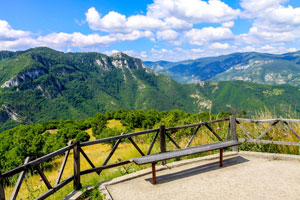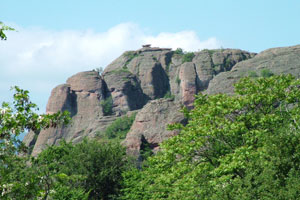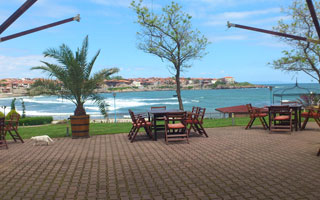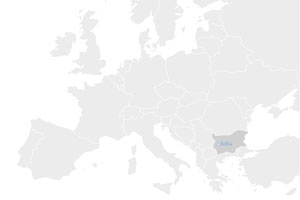Geography
Bulgaria is located in Southeast Europe, in the northeast part of the Balkan Peninsula. Its geographic location places the country on the crossroad between Europe, Asia and Africa. Bulgaria is a transport crossroad, affording access to Western Europe, the Near and the Middle East, and the Mediterranean. Bulgaria has many ports on Black Sea which provide connection with all other Black Sea countries and offer particularly excellent opportunities for the development of transport through the large bays that front Burgas and Varna. Another geographical advantage of Bulgaria is its connection with the 7th Pan-European transport corridor that leads to the Rhine River and the network of waterways that crisscross Western Europe.

Nature
The natural landscape of Bulgaria is diverse, consisting of lowlands, plains, foothills and plateaus, river valleys, basins, and mountains of varying elevations. About 70% of the country’s territory is hilly land and 30% is mountainous. The eastern parts of the country border on the Black Sea, where sandy beaches cover hundreds of kilometers, attract both Bulgarian and foreign tourists.
Bulgaria is located in the temperate continental latitudes, and its climate is favorable for the development of various types of tourism. The average annual amount of sunshine for the territory is about 2,500 hours. The highest average monthly temperatures are typical for July and August. They range from 31 – 34°С.

Capital city
Sofia is Bulgaria’s capital and its largest city. Founded thousands of years ago, today the city continues to develop as the country’s cultural and economic center. At present, the city has a population of 1,250,000 and is located in the western part of the country, on The Sofia Plain and on the lower slopes of Mount Vitosha.
Sofia preserves many valuable monuments to its long and storied past. Visitors exploring the city’s streets can see remnants of The Eastern Gate from the days when Sofia was Serdika, dating from the 2nd-4th centuries CE.
Sofia also hosts Bulgaria’s most prestigious and largest educational institutions – universities, colleges, and middle schools.
Like every big city, Sofia has something for every taste. There are a wide variety of luxury hotels, some of which part of international hotel chains, along with the great number of hostels and smaller family guesthouses. Sofia also offers a multitude of discotheques, restaurants, bars, piano bars, folk clubs, taverns, soda fountains, fast food outlets and many other kinds of entertainment.

Facts & Figures
- The oldest gold treasure in the world was found in Bulgaria dating back more than 6000 years.
- Lactobacilicus Bulgaricus, the bacterium that is responsible both for the production of the famous Bulgarian yoghurt and for its unique flavor and consistency can be found only in Bulgaria
- Nearly one third of Bulgaria is covered with forest
- The roses grown in Bulgaria’s “Rose Valley” produce most (70-85%) of the world’s rose oil which is a key component in most perfumes
- The Cyrillic script that is nowadays widely spread around the world was developed in the First Bulgarian Empire during the 9th century AD at the Preslav Literary School by disciples of the brothers Cyril and Methodius. The Bulgarian Saint Clement of Ohrid is often associated with the creation of the Cyrillic. Тhe Cyrillic script is third official script in EU.
| Location | Location 43 00 N and 25 00 E , East Europe |
| Time Zone | GMT + 2 |
| Area | 110,994 km2 |
| Population | 7,364,570 |
| Language | Bulgarian (official) — English (Business Language) |
| Capital | Sofia |
| Currency | Lev |
| Political System | Republic |
| EU Member | Since 2007 |




